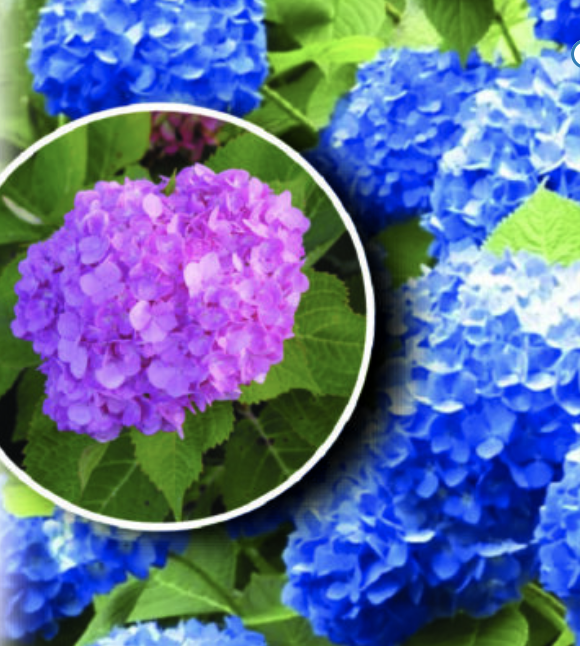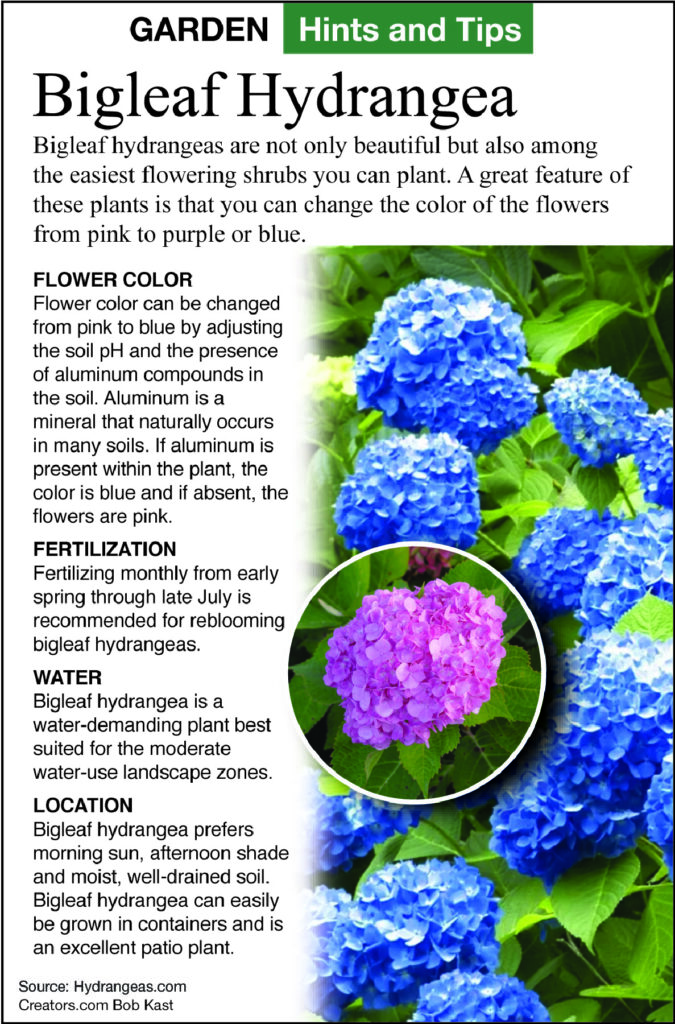Search Posts
Recent Posts
- RI Veterans: Did you know? 12.06.25 (Memorial Day, Vets Cemetery, Events, Resources) – John A. Cianci June 12, 2025
- We Cook! Mill’s Tavern’s Mediterranean Seared Salmon, Olive Tapenade, Artichoke Hearts, Roasted Red Pepper Tahini June 12, 2025
- Why more Rhode Islanders are choosing Heat Pumps over traditional AC this summer June 12, 2025
- CNAs to be trained at URI in administering medication in state facilities June 12, 2025
- Rhode Island Weather for June 12, 2025 – Jack Donnelly June 12, 2025
Categories
Subscribe!
Thanks for subscribing! Please check your email for further instructions.

A Greener View: Blue Hydrangea magic – Jeff Rugg
By Jeff Rugg, contributing writer
Question: I received a pretty blue flowering hydrangea for Mother’s Day. I already have white-flowering hydrangeas that I would like to turn blue. I was told I could put nails in the soil around the roots to turn them blue. Is that true, and if so, what kind of nails do you use?
Answer: It is not true that nails or pennies should be put in the soil around plants for any reason. They will not help the hydrangea have blue flowers.
There are two species of hydrangeas that can have blue flowers. Hydrangea macrophylla (bigleaf hydrangea) is native to the coastal areas of Japan. Hydrangea serrata (mountain hydrangea) is native to the mountainous areas of Japan but is much less common in the U.S. than the big-leaf hydrangea. They are so similar that some people think they are one species, but the mountain hydrangea has hardier flower buds and can bloom better in the northern states.
No white-blooming hydrangea will turn blue no matter what you do. The white flowers may turn pink or red as they age but not blue.
All the pink to purple to blue colored hydrangeas develop their color based on how much aluminum is available to the roots. The aluminum is more soluble in soil that is acidic, and the more aluminum the soil releases to the plant, the bluer the flowers will be.
In areas where the soil is limestone based and the well water comes from limestone aquifers, you should expect the flowers to turn pinker as the plant gets older and establishes more roots into the surrounding high pH soil. Even lake and river water can have a high enough pH to turn hydrangea flowers pink.
Garden soils with lots of organic matter and lots of peat moss are usually a little bit more acidic than a neutral pH of around 7. These soils will produce lavender or purple flowers. To get a real solid blue, the pH needs to drop down to around 4.5.

If your plants are pink, you have a neutral or basic pH and not an acidic soil. You will need to test the soil’s pH to find out exactly what it is. Test kits are available at garden centers. Sometimes, your local extension service knows of companies that will test your soil for pH, nitrogen, phosphorus, potassium and lots of other nutrients. If you have hydrangeas in two different beds, you will need to have both soils tested.
To lower the soil’s pH, you need to add aluminum sulfate to the soil around the hydrangeas. It will burn the roots and kill the plants if too much is used, so follow the label directions carefully. It can be a few-year process to get the soil to the proper pH for blue flowers. To maintain the acidity in the soil in regions where the water has a high pH you will need to add small amounts every year. Too much nitrogen and too much phosphorus will also promote the pink color you don’t want, so don’t use too much fertilizer.
If you have a blue hydrangea and want it to have pink flowers, you need to raise the pH of your soil. Adding lime to your soil can do this. Lime is less deadly to plants. Don’t add the lime more often than about once every three or four months. You will need to raise the soil’s pH to at least 6.5 to get out of the purple tones and into the pink. Above a pH of 7 will get a nice vivid pink. A pH in the 5.5 range will be purple and in the 4.5 range will be blue.
This article is AI-free.

Jeff Rugg – With degrees in science, zoology, horticulture and landscape architecture Rugg uses his many interests to help others learn about nature. He has managed garden centers in Texas and Illinois and owned a water garden and wild bird nature store.
He is currently an employee of Pond Supplies of America. His articles and photographs have appeared in Pond Keeper, Water Garden Magazine, Landscape Architect and Specifier News, Landscape Contractor Magazine, Ponds USA, American Nurseryman and other publications. He is currently an Illinois Certified Nurseryman and Registered Landscape Architect.
Email questions to Jeff Rugg at info@greenerview.com. To find out more about Jeff Rugg and read features by other Creators Syndicate writers and cartoonists, visit the Creators Syndicate website at www.creators.com.
COPYRIGHT 2023 JEFF RUGG – DISTRIBUTED BY CREATORS
